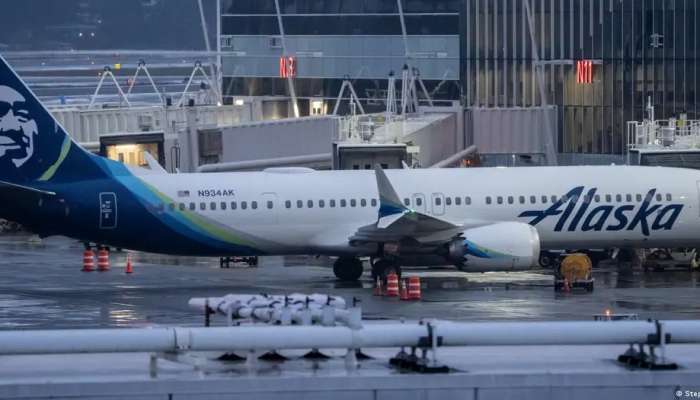
Portland: The head of the National Transportation Safety Board (NTSB) said late Sunday that part of a Boeing aircraft that blew off mid-flight on Friday was located by a schoolteacher in his backyard.
The piece of fuselage recovered from the yard in Portland, Oregon could provide clues as to what caused a panel used to plug a portion reserved for an exit door on an Alaska Airlines' Boeing Max 9 jet to blow off on Friday shortly after the flight took off.
Investigators said a plug on an unused exit door seal blew off while the plane was climbing, depressurising the aircraft at 16,000 feet (about 4.9 kilometres).
The plane, with the 171 passengers and six crew members on board made an emergency landing back to the Portland International Airport with no serious injuries. Boeing plans to hold a company-wide webcast on safety on Tuesday to address its response.
Alaska Airlines and United Airlines have since canceled at least 350 flights, as all of their Boeing 737 Max 9 jetliners remained grounded on Sunday amid an investigation into the incident.
The airlines are currently waiting to be told how to inspect their planes to prevent another incident.
Alaska Airlines said it had canceled 170 flights — more than one-fifth of its schedule — by mid-afternoon on the West Coast.
The Federal Aviation Administration (FAA) wrote on social media that it "is requiring immediate inspections of certain Boeing 737 MAX 9 planes before they can return to flight."
"These aircraft have now also been pulled from service until details about possible additional maintenance work are confirmed with the FAA," Alaska Airlines said in a statement. "We are in touch with the FAA to determine what, if any, further work is required."
United Airlines said it had canceled at least 180 flights for Sunday. It had salvaged others by using other planes not affected by the grounding.
"We've begun steps such as removing the inner panel to access the emergency door, and begun preliminary inspections while awaiting final instructions," it said in a statement.
The FAA on Saturday grounded all Boeing 737 Max 9 aircraft operated by US airlines or foreign airlines flown into the country.
This order affects about 171 planes worldwide. Of this, 144 planes operate within the US, according to data from aviation analytics firm Cirium.
Apart from Alaska Airlines and United Airlines — the only two US carriers using the jetliner, Turkish Airlines, Panama's Copa Airlines and Aeromexico said they were grounding affected jets.
Alaska Airlines briefly returned 18 of its 65 Boeing jetliners to service, less than 24 hours after the blow out, but soon received a notice from the FAA saying the planes needed additional work.
After finding the blown out plug, investigators said they will examine it for any indication as to how it broke free. The part measures 26 by 48 inches (66 by 121 centimetres) and weighs 63 pounds (28.5 kilograms).
US National Transportation Safety Board (NTSB) Chair Jennifer Homendy said Sunday that the aircraft involved in the incident was not being used for long flights over water, for example, to Hawaii, after a warning light that could have indicated a pressurization problem lit up on three different flights, AP news agency reported.
Homendy cautioned that the pressurization light might be unrelated to Friday's incident.
United said it was waiting for Boeing to release a bulletin on how to inspect the 737 Max 9 planes. AP news agency reported that Boeing is working on a bulletin but had not yet submitted it to the FAA, citing a person familiar with the situation.
Reuters news agency, also citing an unnamed source, reported that Boeing and the FAA were yet to agree on the criteria for the checks.
Boeing did not comment on the proceedings.
This is only the latest in a series of safety issues on Boeing aircrafts in the last several years.
The twin-engine, single-aisle MAX 9 is the newest version of most-flown commercial series of aircraft in the world, Boeing 737s. Two MAX 8 aircrafts crashed in 2018 and 2019, killing 346 people and prompting a worldwide grounding of all MAX 8 and MAX 9 planes that lasted nearly two years.